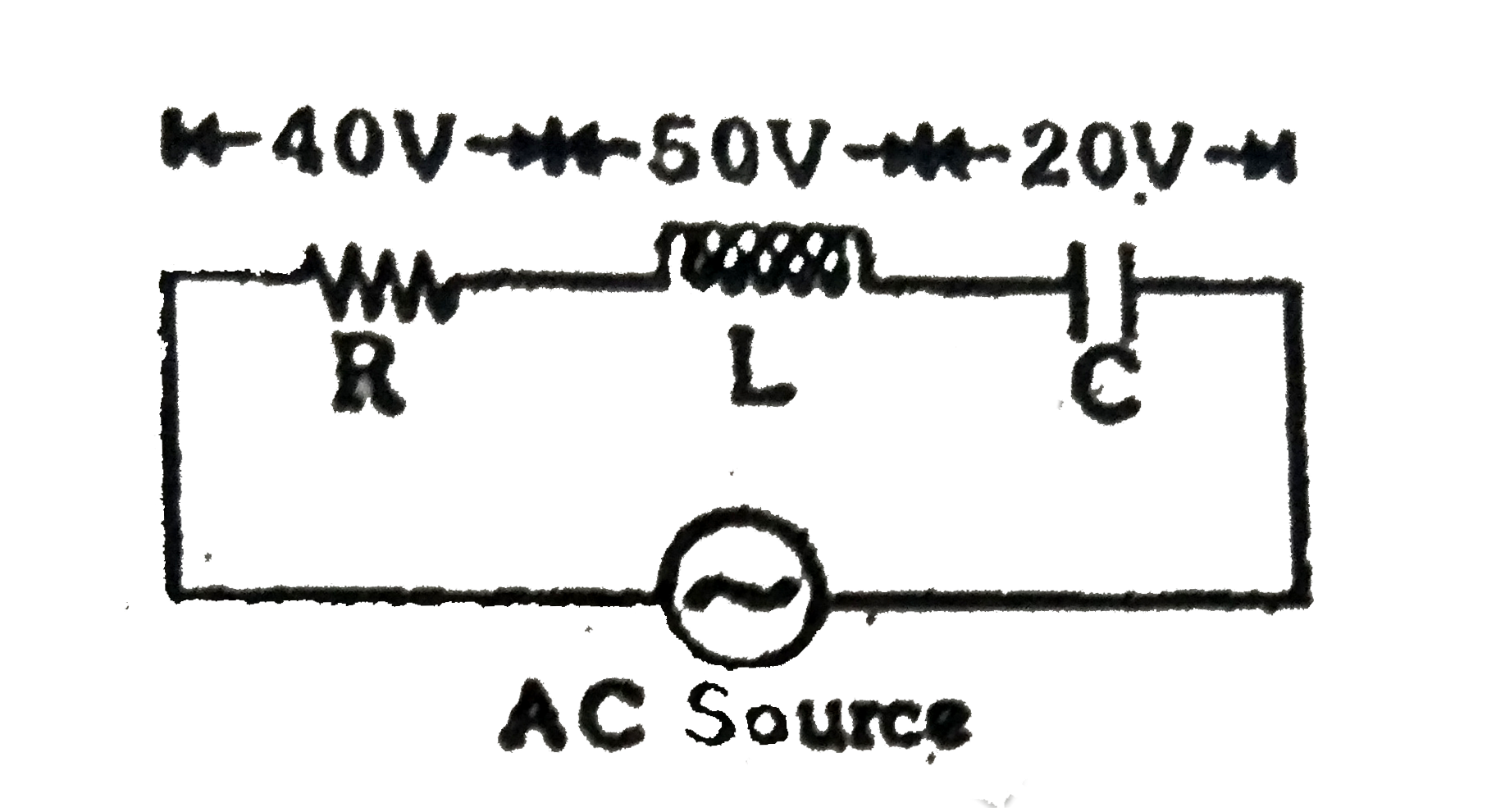Assertion : Resonance is exhibited by a circuit only if both L and C are present in the circuit.
Reason : Only then the voltage across L and C cancel each other, both being out of phase.
If both assertion ans reason are true ans reaason is the correct explanation of assertion.
If both assertion and reason are true but reason is not the correct explanation of assertion.
If assertion istrue but reason is false.
If both assertion and reason are false.
The correct Answer is:A
To solve the question, we need to analyze both the assertion and the reason provided and determine their validity.
1. Understanding the Assertion:
- The assertion states that "Resonance is exhibited by a circuit only if both L (inductor) and C (capacitor) are present in the circuit."
- This is true because resonance occurs in an RLC circuit (which includes a resistor, inductor, and capacitor). In such a circuit, the inductive reactance (XL) and capacitive reactance (XC) can cancel each other out at a specific frequency (the resonant frequency).
2. Understanding the Reason:
- The reason states that "Only then the voltage across L and C cancel each other, both being out of phase."
- This is also true. In an RLC circuit at resonance, the voltage across the inductor (VL) and the voltage across the capacitor (VC) are indeed out of phase by 180 degrees. This means that when one voltage is at its maximum, the other is at its minimum, leading to cancellation of the voltages.
3. Conclusion:
- Since both the assertion and the reason are true, and the reason correctly explains the assertion, we conclude that both statements are valid.
- Therefore, the correct answer is that both the assertion and reason are true, and the reason is the correct explanation of the assertion.
Final Answer:
Both the assertion and the reason are true, and the reason is the correct explanation of the assertion.
- The assertion states that "Resonance is exhibited by a circuit only if both L (inductor) and C (capacitor) are present in the circuit."
- This is true because resonance occurs in an RLC circuit (which includes a resistor, inductor, and capacitor). In such a circuit, the inductive reactance (XL) and capacitive reactance (XC) can cancel each other out at a specific frequency (the resonant frequency).
- The reason states that "Only then the voltage across L and C cancel each other, both being out of phase."
- This is also true. In an RLC circuit at resonance, the voltage across the inductor (VL) and the voltage across the capacitor (VC) are indeed out of phase by 180 degrees. This means that when one voltage is at its maximum, the other is at its minimum, leading to cancellation of the voltages.
- Since both the assertion and the reason are true, and the reason correctly explains the assertion, we conclude that both statements are valid.
- Therefore, the correct answer is that both the assertion and reason are true, and the reason is the correct explanation of the assertion.
Both the assertion and the reason are true, and the reason is the correct explanation of the assertion.
Topper's Solved these Questions
- BOOK - NCERT FINGERTPS ENGLISHCHAPTER - ALTERNATING CURRENT EXERCISE - Ac Voltage Applied To A Resistor17videos
ALTERNATING CURRENT
- BOOK - NCERT FINGERTPS ENGLISHCHAPTER - ALTERNATING CURRENT EXERCISE - Ac Voltage Applied To A Inductor5videos
ALTERNATING CURRENT
- BOOK - NCERT FINGERTPS ENGLISHCHAPTER - ALTERNATING CURRENT EXERCISE - NCERT7videos
ALTERNATING CURRENT
- BOOK - NCERT FINGERTPS ENGLISHCHAPTER - ATOMS EXERCISE - Assertion And Reason15videos
ATOMS
Similar Questions
Knowledge Check
- Question 1 - Select One
An LCR series ac circuit is at resonance with 10 V each across L, C and R. If the resistance is halved, the respective voltage across L, C and R are
A10 V, 10 V and 5 VB10 V, 10 V and 10 VC20 V, 20 V and 5 VD20 V, 20 V and 10 V
In an L-C-R series, AC circuit at resonance
View SolutionIn series LCR circuit, the phase difference between voltage across L and voltage across C is
View SolutionIn series LCR circuit, the voltages across R, L and C are shown in the figure. The voltage of applied source
 View Solution
View SolutionIn L−C−R series circuit
View SolutionIn an LCR series ac circuit the voltage across L,C and R are V1,V2 and V3 respectively The voltage of the source is .
View SolutionAssertion : At resonance, LCR series circuit have a minimum current.
Reason : At resonance, in LCR series circuit, the current and e.m.f. are not in phase with each other.View SolutionAn L−C circuit consists of an inductor coil withh L=50.0mH and 20.0μF capacitor. There is negligible resistance in the circuit. The circuit is driven by a voltage source with V=V0cosωt. If V0=5.00mV and the frequency is twice the resonance frequency, determine.
a. the maximum charge on the capacitor.
b. the maximum current in the circuit.
c. the phase relationship between the voltages across the inductor, the capacitor and the sourse.View Solution


_PHY_E06_308_Q01.png)